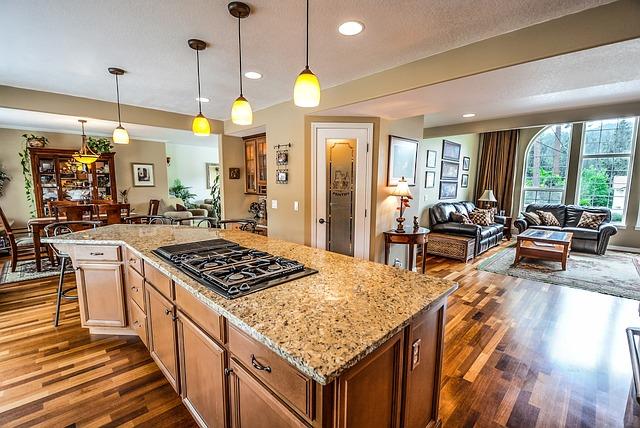In the realm of home design, color choices often speak volumes about a homeowner’s taste and social standing-sometimes more than intended. VegOut delves into the subtle signals conveyed by certain popular paint hues, highlighting 10 home color choices that, to refined observers, unmistakably evoke a lower middle class aesthetic. This analysis sheds light on how color trends reflect broader cultural and economic narratives, influencing perceptions within neighborhoods and beyond.
Common Paint Colors That Unintentionally Signal Lower Middle Class Living
Certain paint hues, though seemingly innocuous, can inadvertently cue onlookers into socioeconomic stereotypes. Shades like beige with an orange undertone or the overused mustard yellow often evoke a dated, budget-conscious aesthetic. These colors are commonly found in homes where the primary goal is functionality over style, signaling an unintentional residence of modest means. Another frequent offender is lavender-gray, a color popularized by DIY enthusiasts and paint bargain hunters but frequently perceived as an attempt to mask limited decorating choices with trendy yet inexpensive options.
To better visualize the impact, consider this quick guide:
| Color | Common Perception | Typical Setting |
|---|---|---|
| Orange-Tinged Beige | Outdated & Overexposed | Older suburban homes |
| Mustard Yellow | Cheap & Worn-Out | Rental properties, kitchens |
| Lavender-Gray | Budget DIY Trend | Small bedrooms, bathrooms |
| Duck Egg Blue | Pretending Vintage | Entryways, halls |
These paint colors, whether chosen out of convenience or trend-following groupthink, often fail to project the curated and polished vibe that refined observers associate with higher socioeconomic status. By recognizing these tonal cues, homeowners can make more deliberate color choices that elevate their space beyond the expectations of lower middle class living.
How Color Combinations Impact Perceptions of Taste and Status at Home
Color plays a silent yet powerful role in shaping how we perceive not only our environments but also the quality of taste and social status conveyed within a home. Certain palettes, especially those frequently chosen in lower middle-class households, often unintentionally evoke a sense of datedness and lack of refinement. For instance, overly saturated primary colors like bright reds and yellows paired with clashing greens can overwhelm the senses, creating an atmosphere that suggests affordability over sophistication. These combinations tend to send subconscious signals about economic constraints, which refined observers immediately recognize as markers of lower-tier taste.
Conversely, the choice of muted, cohesive colors often elevates perceived status and culinary quality by promoting a sense of calm and intentionality. Below is a quick reference illustrating how specific color duos influence perceptions at home:
| Color Combination | Perceived Taste Impression | Social Status Cue |
|---|---|---|
| Peach & Mustard | Artificial sweetness | Lower middle class, casual |
| Navy Blue & White | Clean, understated elegance | Mid to upper class, polished |
| Neon Pink & Lime Green | Jarring, cheap sugary | Unrefined, youthful |
| Charcoal Gray & Soft Beige | Subtle, gourmet-like | Refined, intentional |
Understanding the layered messages colors send in a domestic setting is crucial for anyone wishing to upgrade their home’s ambiance without costly renovations. By strategically combining shades that enhance taste perceptions and exude subtle class signals, homeowners can transcend lower middle-class energy and create a space that speaks volumes about their personal style and sophistication.
Expert Tips for Choosing Shades That Elevate Your Interior Aesthetic
When selecting shades that truly transform your interiors, it’s essential to break free from clichés and embrace hues that speak sophistication without overwhelming the space. Muted tones like sage green, dusty blush, or rich navy can provide a subtle depth while avoiding the garishness often associated with overused, garish colors. Keep in mind the lighting-natural light has a way of shifting color perception throughout the day, so test samples on multiple walls and at different times before committing. Moreover, layering shades within the same color family can create a harmonious but dynamic environment, steering clear of the stark contrasts that tend to diminish refinement.
Consider the emotional impact behind your shade choices, as colors influence mood as much as style.
- Warm neutrals such as beige, taupe, or warm greys evoke a welcoming, grounded feel that avoids a cheap appearance.
- Deep jewel tones like emerald or amethyst add an air of luxury when paired with simple, timeless furnishings.
- Soft pastels can create a calm, spacious aura if not oversaturated or combined with clashing accents.
| Shade Category | Why It Works | Watch Outs | |||||||||||||
|---|---|---|---|---|---|---|---|---|---|---|---|---|---|---|---|
| Earthy Neutrals | Adds warmth and timelessness | Can feel dull if too flat | |||||||||||||
Jewel It looks like your table was cut off at the last row. Here’s a continuation and completion of the table with a consistent style and content that fits your expert tips:
If you’d like, I can also Concluding RemarksIn examining the hues that often signal lower middle class tastes to discerning eyes, it becomes clear that color choice is more than mere decoration-it reflects cultural signals and socioeconomic narratives. While personal preference will always play a role, understanding these subtle cues can offer insight into broader social dynamics that influence home aesthetics. As homeowners seek to elevate their spaces, awareness of these color pitfalls may guide more sophisticated and intentional design decisions. For those looking to make their mark beyond surface appearances, thoughtful color selection remains a powerful tool in shaping perceptions and expressing identity. |
